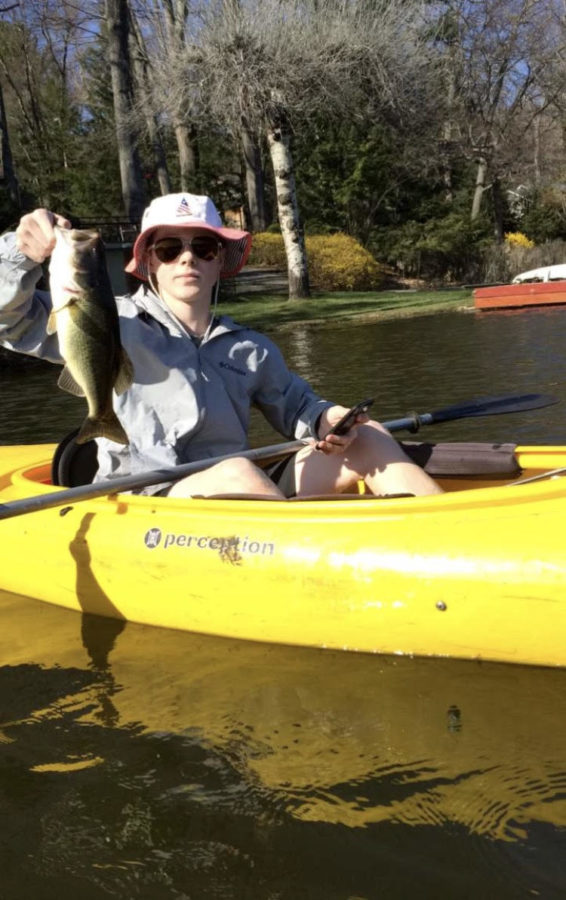A Guide to Bass Spawn Fishing
As the weather starts to improve and the water warms up, it is important to understand the implications of the bass spawning season, which is present in the middle to late spring, and how to catch fish during this period. The bass spawning season is divided into three parts: prespawn, spawn and postspawn.
Prespawn is the period when the water begins to warm up and the bass become more active. At this time, the water temperature is starting to rise above the 45 degree mark. The bass are becoming more active and want to feed a lot before the exhausting spawning season. The bass can be found around points, rocks, logs, brush or pads. Some baits I recommend using are spinnerbaits, jigs, crankbaits and occasionally soft plastics. While using a jig, spinnerbait or soft plastic bait, you are attempting to create a natural movement so some techniques that work well while using these baits are dragging the lure through cover or right above the bottom, hopping these baits off the bottom or dragging them over tree branches or rocks and letting them fall. While using soft plastics I would stick to natural-looking presentations, such as a Texas rig or a wacky rigged senko. While using a crankbait, slowly reel the bait towards cover and bounce the bait off the cover, or rip it through grass or weeds to give it an erratic action. This will entice the bass. The bass in prespawn are hungry and usually easy to catch.
Spawn period is when the bass begin to move towards shallow water and create beds to lay eggs on. At this time, the water will be between 55 and 65 degrees. Bass will create beds in water with a depth of 1 to 6 feet. The male will choose a site that will be easy to defend, near logs, brush or rocks, because he will be responsible for protecting it. The beds look like black or white patches, depending on the bottom makeup, usually not closer than 30 feet from each other. Bass during this time are very aggressive, trying to protect their bed and fry. Some baits that work very well in this period are soft plastics, jigs, spinnerbaits and jerkbaits. There are 2 methods of fishing during this time; you can try to cover a lot of water or cast toward beds and “bed fish”. When covering water, use a bait such as a spinnerbait or jerkbait. These baits can be reeled in quickly to cover a lot of the body of water in a short period of time. The reason these baits will work well is that they cause a lot of commotion in the water which may aggravate a bass on a bed to attack it. These baits should be reeled in at a medium speed, allowing a bass to react to the bait while still guarding its bed, and should be reeled in from 6 inches to 2 feet above the bottom of the body of water or above weeds if they are present. While bed fishing, you are specifically targeting a bass bed and trying to aggravate the bass protecting the bed. Baits such as weighted soft plastics or jigs can be used in this situation. Your goal is to cast your bait right above the bed and when it reaches the bottom of the water and hits the ground, hope the bait resembles a predator looking around for eggs or small fry to eat. Some colors I recommend are bluegill or sunfish patterns or something that mimics a type of fish in your body of water that feeds on bass beds. Fishing in the spawn season can be exciting and enjoyable, especially when you can witness a bass eat your lure on the bed and set your hook.
Postspawn is the period after the bass spawn and are tired and want easy meals. The water temperature will range from 65 to 75 degrees at this time. The bass just spent a lot of time and energy spawning and protecting their beds, and they will be suspended in channels, at points or under docks of your body of water. The bass will move deeper than they were during spawn and will be very finicky and hard to catch. Luckily, this period only lasts about 2 weeks. While fishing during this time, I recommend using a smaller sized deep diving crankbait or jerkbait. This is because the bass will be between 6 and 20 feet deep. When retrieving these lures after casting, reel very slowly, to the point where the lure is moving as slowly as possible but still has its action. The reasoning behind this is simply because the bass will not chase a lure for a long period of time or speed up to catch one, but they will look to eat a slow moving bait that looks like an easy meal for them. Fishing in postspawn can be disappointing because of the lack of bass movement.
Fishing in the bass spawning season can be very exciting and may even help you beat your personal best bass. Using these tips and tricks, I believe you will catch a boatload of bass.









Chad Petschek • Apr 17, 2017 at 7:58 pm
Great Article! Very informative.